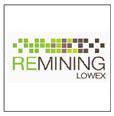
Details
Description
REMINING-LOWEX dealt with the redevelopment of European mining areas into sustainable communities by integrating energy supply and demand, based on low-exergy principles. Four ambitious local communities - Heerlen (The Netherlands), Zagorje (Slovenia), Czeladz (Poland) and Cherno More (Bourgas, Bulgaria) - demonstrated the use of locally available low-valued renewable energy sources from water in abandoned mines for heating and cooling of buildings, based on low-exergy principles, facilitated by an integrated design of building and energy concepts. The project created two sustainable mining communities (Heerlen and Zagorje) with 50 to 100% CO2 reduction and 60% RES compared with standard national practices.
The two demonstration sites contained 440 new houses, 276 existing houses, 57,000 m2 of non-residential new buildings, 43,500 m2 non-residential existing buildings, and 3 existing buildings prepared to connect with the mine water grid in Heerlen and 6,500 m2 existing buildings in Zagorje. Feasibility studies leading to concrete local sustainable energy plans and implementation were demonstrated in Czeladz, Cherno More, Zagorje and the nearby former mining communities in Heerlen.
Map
Project demonstration sites
REMINING-LOWEX Site Zagorje
City
REMINING-LOWEX Site Heerlen
City
Results
The Dutch city of Heerlen used heat energy stored in old mineshafts for the heating and cooling of buildings. A new district heating grid used water at a constant temperature of 22o C from the mines. The used water was pumped back into the mineshafts. No further increase in the temperature of the mine water was needed. The water ran through an embedded hydraulic piping system under the floor of the Heerlerheide Centrum, a new multifunctional complex for residential use, which also contains a library, a supermarket, a conference room and a café. Solar cells were integrated into the buildings, in window shades that move according to the position of the sun.
Zagorje showed that locally available, low-valued renewable energy resources could be utilised. In Zagorje´s case, this energy was contained in water from abandoned mines. A system was put in place to use geothermal energy from mine-water to heat a youth centre and a primary school. The water has a temperature of around 33 to 34 degrees Celsius and was also used as a source of cooling energy for commercial buildings and a swimming pool. This project contained 6,000 m² new and 2,000 m² existing buildings using mine water and 1,154 existing houses that were connected to the district heating network fed by a biomass CHP.
Related topics
Building aspects
- Building Energy Services
- heating and DHW
- Technology used to supply the buildings
- district heating (DH) network
- Technology used to supply the buildings
- heat pump: compression
Thematic Field
- New Building(s)
- Refurbished Building(s)
